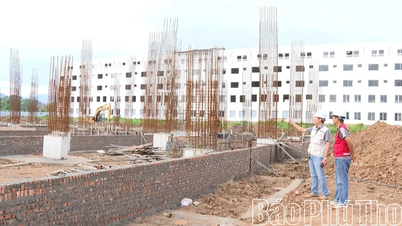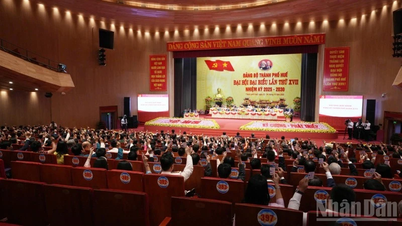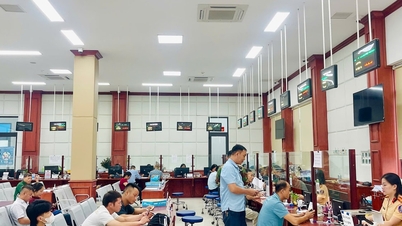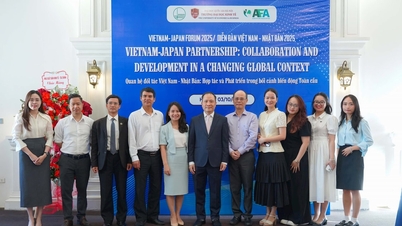It is no coincidence that Resolution 68 on private economic development affirmed that the private economic sector is an organic part of the national economy; the most important driving force of the socialist-oriented market economy. Private economic development is a breakthrough to activate the pioneering and creative nature of this sector in creating jobs, contributing to growth, being ready to invest in developing new production sectors, improving people's lives, and contributing to building an increasingly developed country.
In addition, the resolution also emphasized that, together with the state economy and collective economy, the private economy plays a core role in building an independent, autonomous, self-reliant and self-reliant economy. Developing the private economy quickly, sustainably, effectively and with high quality is an urgent, strategic and long-term key task.
However, it must be said frankly that the private economy is still facing many barriers that hinder its development, has not yet made a breakthrough in scale and competitiveness, and has not yet met the requirements and expectations of being the core force of the country's economy. Specifically, most enterprises are micro, small and medium-sized; financial potential and management level are limited. Technological capacity and innovation are low; labor productivity, operational efficiency and competitiveness are not high. Business thinking lacks strategic vision, and lacks connection with state-owned enterprises and enterprises with foreign direct investment.
The reason for this situation is that the thinking and awareness of the position and role of the private economy in the economy are still inadequate, not keeping up with the development requirements; institutions and laws are still entangled and inadequate. In addition, the private economy still faces many difficulties and obstacles in accessing resources, especially capital, technology, land, resources and high-quality human resources. Some preferential and support policies are not really effective and difficult to access, and business costs are still high.
To analyze more clearly, an expert cited that labor productivity in the non-state sector, including the private sector, is not only much lower than other sectors, but the growth rate is also lower. Accordingly, labor productivity is only 34% of the state sector and about 69% of the FDI sector. Science and technology capacity is also weak, the rate of high-tech enterprises accounts for only about 12.1%; workers' income is only 57% of the state sector and 80.5% of the FDI sector. The average pre-tax profit of a private enterprise is only 0.52% of that of a state enterprise and nearly 3.1% of that of an FDI enterprise.
In particular, besides 1 million enterprises, there are 5 million individual business households that have not yet converted into enterprises for many reasons, including the mentality of "not wanting to grow", "not willing to grow" due to concerns and hesitations about the constraints of regulations and procedures when converting as well as during the operation process.
With these shortcomings and limitations, to achieve the target of double-digit GDP growth and the targets set by Resolution 68, such as striving to have 2 million enterprises operating in the economy by 2030, with at least 20 large enterprises participating in the global value chain. The average growth rate is about 10-12%/year, higher than the growth rate of the economy; contributing about 55-58% of GDP, about 35-40% of total state budget revenue, creating jobs for about 84-85% of the total workforce; labor productivity increases on average about 8.5-9.5%/year... - there is a lot to do, the most important of which is to have appropriate, long-term stable macroeconomic mechanisms and policies to unleash resources and endogenous strength, while creating a foundation for the private economic sector to break through.
Source: https://daibieunhandan.vn/khai-phong-nguon-luc-suc-manh-noi-sinh-10388638.html



![[Photo] Prime Minister Pham Minh Chinh chairs meeting to deploy overcoming consequences of storm No. 10](https://vphoto.vietnam.vn/thumb/1200x675/vietnam/resource/IMAGE/2025/10/3/544f420dcc844463898fcbef46247d16)

![[Photo] Students of Binh Minh Primary School enjoy the full moon festival, receiving the joys of childhood](https://vphoto.vietnam.vn/thumb/1200x675/vietnam/resource/IMAGE/2025/10/3/8cf8abef22fe4471be400a818912cb85)






![[Infographics] An Giang Agriculture 2020-2025: Stable growth, quality transformation](https://vphoto.vietnam.vn/thumb/402x226/vietnam/resource/IMAGE/2025/10/1/bf3a77ba3a0243a697e5253ed4cd6f9c)





























































































Comment (0)